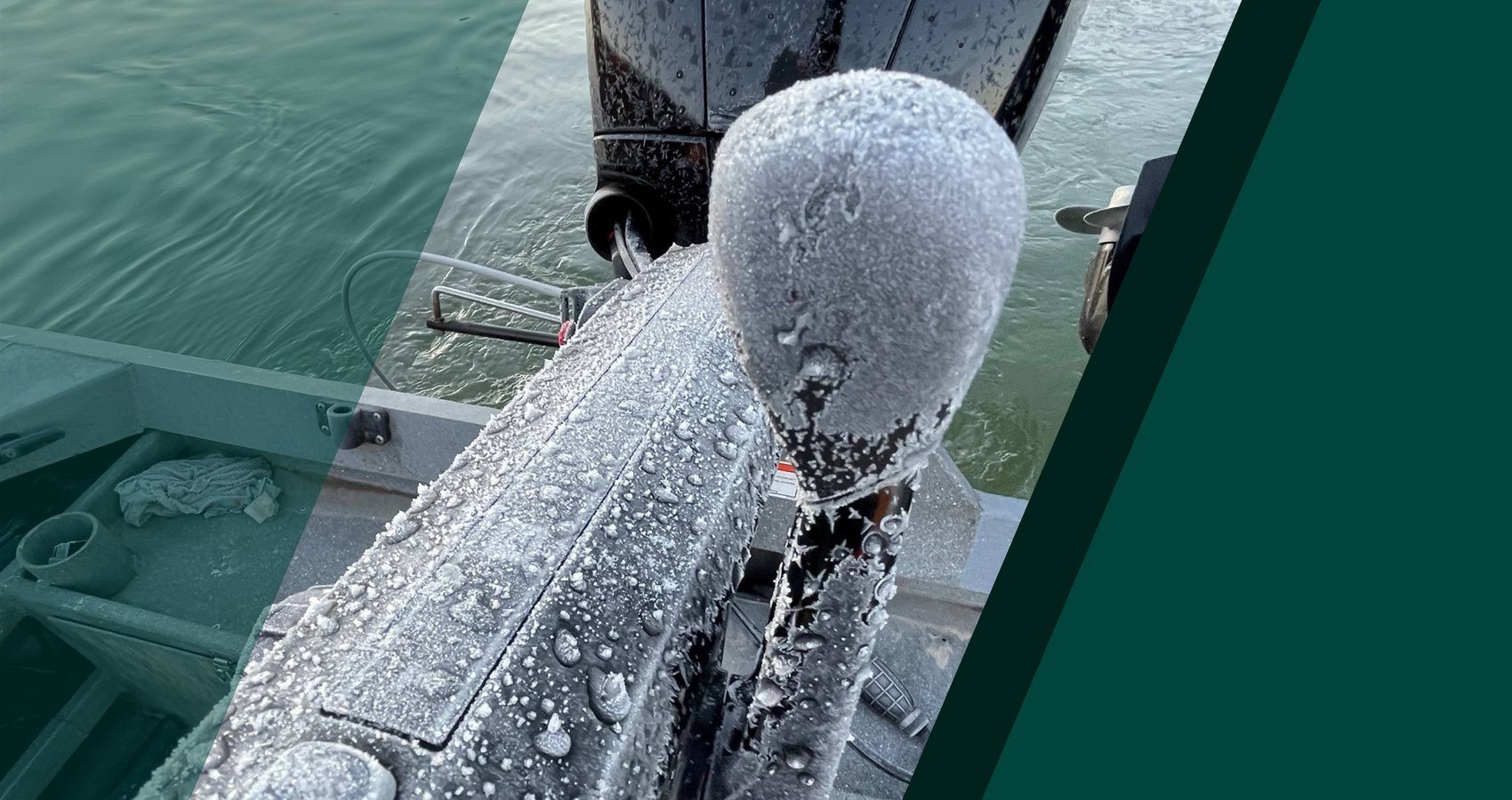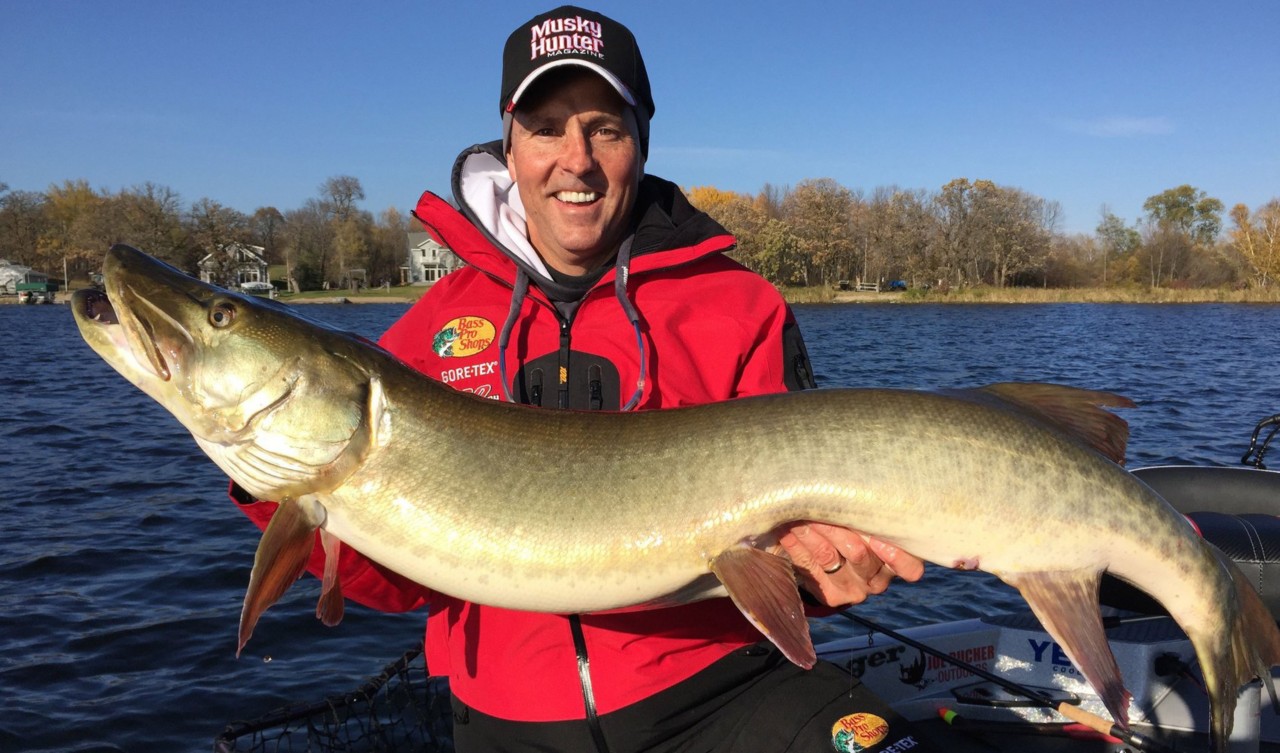There’s a group of hearty anglers willing to make 10,000 casts in hopes of catching a single musky for this simple reason — their next musky might be the biggest ever landed, and catching it would be the story of a lifetime.
And then there’s this:
Right now, according to musky‑catching guru Jim Saric, is the best time of the year to catch the next IGFA World Record musky. Or muskie. Or muskellunge. Or ugly pike, if you speak Ojibwe.
The official IGFA World Record musky — measuring 60.25 inches long and weighing 67 pounds, 8 ounces — was caught by Cal Johnson near Hayward, Wisconsin, in 1949. There was another monster, some say, that was caught in Wisconsin (also in 1949) that weighed 69 pounds, 11 ounces, and another allegedly hit 70 pounds. But rules are rules, and those two didn’t meet the rules regarding world records. Both were disqualified, and Johnson’s catch remains king after 70 years.
Muskies are the great white sharks of the freshwater world. Large, powerful and well‑armed, they ambush prey and attack ferociously, biting hard and swallowing their meals head first. Their explosive strikes on top‑water lures are legendary.
Saric, host of The Musky Hunter TV show and editor of Musky Hunter Magazine, recently pointed out that stable summer waters of northern North America might produce the highest number of musky. Still, those same waters are much more likely to produce trophy musky in late fall.
“Water in late fall can be unstable. The days — and, therefore, the fishing windows — are shorter and the weather is colder, but the fish are heavier,” he said. “And once you locate them, you should be able to catch more of them because they tend to concentrate.”
Those locations, Saric said, include steep shores near deep water, deep holes in river systems, and areas where rivers flow into the Great Lakes. The highly-sought-after musky can be found in about 16 states but are most prolific in the northern Midwest states and Canada.
“The prospect of catching a big fish is what drives musky anglers,” he said. “It’s a desire to hunt and pursue giant fish. They typically aren’t driven to catch a lot of fish – they just want something really big.
“When you hear musky guys talking, they don’t ask each other how many they caught. The first thing they ask is, ‘What was your biggest fish?’”
Saric fishes from a 20‑foot Ranger boat with a Mercury 250hp Verado outboard. But he says his Mercury 15hp Pro Kicker is the true workhorse.
“When it’s windy, we can use the Verado for trolling, but most of the time, we rely on the 15 Pro Kicker,” he said. “Right now, summer is behind us, early fall is over and late fall is in full swing. It’s the perfect time to catch trophy musky.”
The fish are heavier now, not because they’re eating more but because their bodies are storing fat for the coming winter. Muskies typically eat all types of fish within their system, including other muskies, as well as small mammals, frogs and ducks. In late fall, they’re often looking for easy, slower meals they don’t have to burn calories to chase.
Because muskies tend to hunt deep during the fall, trolling becomes more practical to maintain depth and to increase the amount of time your bait is in the water critical with the shorter fishing window.
Saric recommends casting to break-lines or drop-offs along steep shorelines adjacent to deep basins, large points or bars, or mid-lake reefs. He typically uses big soft plastics, crankbaits, and jerk baits in neutral colors, such as white, black and perch patterns.
“Slower is generally the rule in fall,” he said, “using longer pulls and pauses with soft plastics so they run deeper. Use vanilla-plain slow retrieval with crankbaits, and include a longer pause between pulls when fishing jerk baits.”
For live bait, Saric uses 14- to 16-inch suckers, as muskies will follow cisco and whitefish to their spawning areas, which are sand and gravel shorelines.
Employing the famed musky “figure eight” near the boat remains a must in the fall.
“The figure eight is huge in the fall,” he said. “The fish often follow deep, so keep the bait deep in the “eight” at first, and then bring it shallower and hang the lure in the turn for a split second. That usually gets them to bite.”
Saric added that he typically fishes with 80-pound line and 130-pound fluorocarbon leaders with a heavy or extra-heavy 9-foot rod.
“You need to wear the right clothes, including hats and gloves because you need to be able to last through the cool afternoons and into the cold evenings,” said Saric. “If you don’t dress right, you won’t make it until the best fishing window. It’s less important to get out there early in the morning than it is to be there for the afternoon and evening.
“A lot depends on when the moon rises. Snow, frost, and the moon are triggers. It’s cold but you stay out there hoping for a bite on a day that’s your best chance of the year to catch the biggest fish of your life. The longer you can hang in there, the greater chance you have of success.”
To learn more about expert musky techniques, follow Jim Saric on YouTube.




